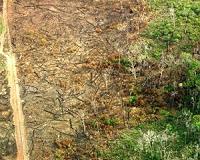| . |  |
. |
Paris, France (SPX) Feb 23, 2011 Biodiversity loss is a growing concern. Protected areas are a instrument to counteract this trend. The UN's Convention on Biological Diversity conference of the parties in Nagoya (October 2010) set stringent new targets to be reached by 2020. At least 17% of terrestrial and inland water and 10% of coastal and marine areas have to be protected. But are protected areas really protected? Are they in the right place? Where should new protected areas be located? The European Commission's Joint Research Centre (JRC), in collaboration with other partners, is helping decision-makers to find their way through the vast amount of information needed to answer these and other questions by setting up a Digital Observatory for Protected Areas (DOPA). DOPA is conceived as a set of distributed databases and open, interoperable web services to provide decision-makers and researchers with a means to assess, monitor and forecast the state of, and pressure on, protected areas on a global scale. It should help them prioritise and support them in decision-making and fund allocation processes. DOPA's modelling capabilities and global coverage will also enable to go beyond existing boundaries of protected areas to address anthropogenic pressures on ecosystems, as well as identifying ecological corridors and new areas to be protected. DOPA is being developed in collaboration with other major organisations including the Global Biodiversity Information Facility (GBIF), the National Aeronautics and Space Administration (NASA), the UNEP-World Conservation Monitoring Centre (WCMC), Birdlife International and the UK Royal Society for the Protection of Birds (RSPB). The Observatory minimises exposure to the risks from mixing undocumented data with undocumented uncertainties and connecting scientific findings from the field with environmental observations from space. By connecting data in a careful and controlled manner, DOPA is already helping to answer questions raised in Nagoya: Are the protected areas really protected? Are they in the right place? Are they optimally connected? Where should new protected areas be located? Where should funds be targeted? Can these new areas be protected without generating conflicts? Will these protected areas be able to cope with climate change?... Effective protected area management deals with complex links between environmental and anthropogenic factors, calling for information gathered from many disciplines. The information needed ranges from molecular to global scales and over time periods of hours to centuries. This multidisciplinary aspect also means that large volumes of data have been collected and maintained independently, with related models having also been developed and operated in isolation. In DOPA, data on protected areas, species distributions and socio-economic indicators are combined with the JRC's remote sensing information in order to generate global environmental indicators, maps and alerts. However, what looks in principle like a simple data exchange, becomes extremely complex in the absence of syntactic and semantic interoperability of the data and the systems serving them. Hence, beyond the simple sharing and exchange of information, DOPA relies on open-ended systems of interoperable computer models and databases communicating via Service Oriented Architectures (SOA), a design that is becoming the cornerstone of all modern integrated assessments and is recommended by the Group on Earth Observations (GEO) - a voluntary partnership of governments and international organisations, which coordinates efforts to build a Global Earth Observation System of Systems (GEOSS).
Background information: the nations call for a protected planet, the Nagoya targets Our needs for agriculture, fishing, housing, energy and water, combined with the pollution of vast areas of land and ocean and an insatiable demand for resources, are putting relentlessly increasing pressure on the natural environment. Protected areas are a vital part of mankind's attempts to preserve the diversity of life on earth. The Nagoya Strategic Plan sets stringent new targets for the 193 countries that have signed up: by 2020, at least 17% of terrestrial and inland water will have to be protected and the surface of protected coastal and marine areas will have to almost double. The European Union has adopted a new 2020 biodiversity target in March 2010 which aims at halting the loss of biodiversity and the degradation of ecosystem services in the EU by 2020 and restoring them as much as possible. At the same time, the EU will step up its contribution to averting global biodiversity loss. The adoption of a new EU biodiversity strategy is envisaged in 2011 to translate the EU target into specific measures.
Share This Article With Planet Earth
Related Links European Commission Joint Research Centre Forestry News - Global and Local News, Science and Application
 Experts Question Aspects Of Prescribed Burning
Experts Question Aspects Of Prescribed BurningKew UK (SPX) Feb 23, 2011 Prescribed burning to reduce the hazards of bushfires may do more harm than good in some circumstances, according to a group of leading environmental scientists. From The University of Western Australia, Kings Park and Botanic Garden, and the Royal Botanic Gardens, Kew, England, the scientists argue that deliberately increasing the frequency of fires may lead to ecosystem degradation and loss of ... read more |
|
| The content herein, unless otherwise known to be public domain, are Copyright 1995-2010 - SpaceDaily. AFP and UPI Wire Stories are copyright Agence France-Presse and United Press International. ESA Portal Reports are copyright European Space Agency. All NASA sourced material is public domain. Additional copyrights may apply in whole or part to other bona fide parties. Advertising does not imply endorsement,agreement or approval of any opinions, statements or information provided by SpaceDaily on any Web page published or hosted by SpaceDaily. Privacy Statement |